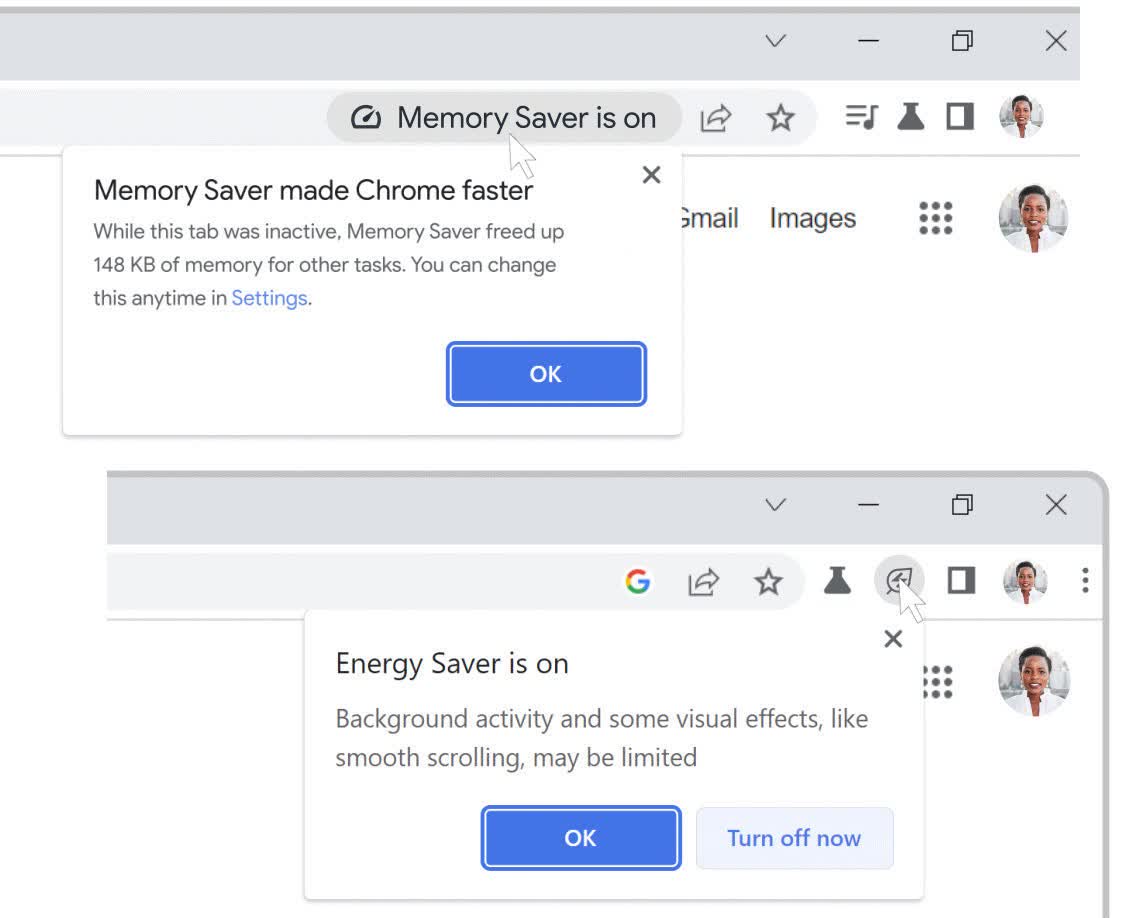Why it matters: Google Chrome's reputation as a memory hog has been a running joke for years. Google's latest attempt to fight the problem is a pair of new modes that help its browser conserve RAM for multitasking and battery life for laptops.
The latest version of Google Chrome introduces new modes to save memory and energy. The update will roll out globally over the next several weeks for Windows, macOS, and ChromeOS users.
Those with a lot of open tabs can activate Memory Saver mode to free up RAM from tabs they aren't using. Inactive tabs will reload when needed again.
The setting should create a smoother experience in active tabs and save memory for applications outside of Chrome. Google says Memory Saver mode is useful when keeping Chrome open in the background while running other intensive software like video editing or games.
Energy Saver mode can limit certain effects on websites like videos, animations, and background activity to save laptop battery life. The feature automatically engages when a laptop's battery level falls below 20 percent, but users can manually toggle it.

Controls for both modes appear in Chrome's three-dot menu on the top right corner of the window. When engaged, Memory Saver mode appears as a notification on the right side of the address bar, while Energy Saver displays a leaf icon in a menu to the right of the address bar.
This isn't the first time Google has tweaked Chrome to improve performance and battery life. In July, a feature was discovered that effectively pauses inactive tabs by tightening restrictions on JavaScript code that users haven't touched in a while. The functionality applies to desktop and mobile versions of Chrome, while the latest update only affects the browser on computers.
Google's announcement this week comes shortly after it revealed new search functionality for Chrome. Users with Chrome version 108.0.5359.95 and later can use the address bar to search their history, open tabs, and bookmarks. Type @bookmarks, @tabs, or @history into the address bar to search each one, respectively.
The new feature should help users who are sifting through many open tabs or who need to recall a website they previously visited. Chrome's history section already has a search bar, but the update moves this functionality to the main access bar for faster access.
